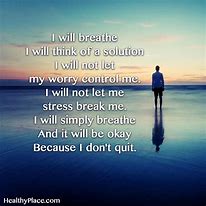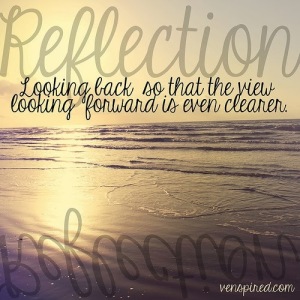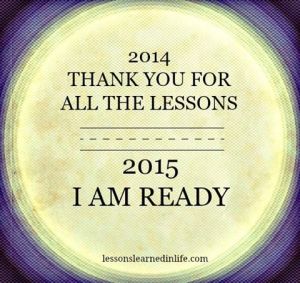I recently gave a presentation at a leadership seminar. The seminar’s theme was Simplify and part of the description of my presentation, which was on taking things in stride, read, “Working to simplify one’s life means making choices and decisions. At times, just thinking about those choices and decisions can be overwhelming especially with everything else going on in our lives. And, when we get overwhelmed we tend to worry about thing and often that worry is focused on things out of our control. …”
 Participants defined worry as allowing their minds to dwell on stuff (troubles, difficulties, someone’s well-being, relationships, the future…) Many shared that most of what they worried about was stuff that never happened or stuff that was totally out of their control. I presented the group with the Dalai Lama’s (Tibetan spiritual leader) thought, “If you have fear of some pain or suffering, you should examine whether there is anything you can do about it. If you can, there is no need to worry about it; if you cannot do anything, then there is also no need to worry.”
Participants defined worry as allowing their minds to dwell on stuff (troubles, difficulties, someone’s well-being, relationships, the future…) Many shared that most of what they worried about was stuff that never happened or stuff that was totally out of their control. I presented the group with the Dalai Lama’s (Tibetan spiritual leader) thought, “If you have fear of some pain or suffering, you should examine whether there is anything you can do about it. If you can, there is no need to worry about it; if you cannot do anything, then there is also no need to worry.”
Someone asked if worry was always bad. No, it isn’t. If the worry about something would spark us to take action and deal with the situation, then in that case, the worry proved helpful. If worry pushes us to make necessary changes in our lives, then it is helpful. If the worry warns us that we may be in danger and inspires us to take action to get ourselves out of danger, that is helpful. (This danger can be any type of threat to our physical or emotional well-being, from not doing well on a test to losing a job to losing a loved one.) In this way, our worry is healthy and necessary; without it we may not act in our own best interest.

However, the point at which worry becomes unhealthy is when it stops pushing us to act. This can either be because we are worried about things that are not under our control or that have not happened yet, or because we are immobilized by the stress and anxiety we feel, rather than being inspired to act. Whatever the reason, this type of worry is not helpful to us in any way. This type of worry is like a rocking chair. It gives us something to do; however, it doesn’t get us anywhere. In fact, this type of worry can be detrimental to us.
We need to make sure that we don’t get too comfortable in or stuck in the rocking chair of worry. While I can say ‘just don’t worry’ that would be totally unrealistic of me. We all tend to worry about something at some time. So, what I will offer this week are six suggestions from my presentation on how to productively deal with worry.

CREATE A LIST OF YOUR WORRIES. It is important to identify exactly what is creating the concern, the worry.
 CATEGORIZE THE WORRY LIST. Take the items on the list you created and place each item into one of two categories: solvable or unsolvable. Solvable worries are those items about which you can do something. Unsolvable worries are those items about which you can’t do anything. You have no control over those items. No matter how much you worry, you will not affect the outcome of the item or situation.
CATEGORIZE THE WORRY LIST. Take the items on the list you created and place each item into one of two categories: solvable or unsolvable. Solvable worries are those items about which you can do something. Unsolvable worries are those items about which you can’t do anything. You have no control over those items. No matter how much you worry, you will not affect the outcome of the item or situation.
To help with this categorization, you can ask yourself:
- Is what I am worried about something I am really facing or is it a ‘what if?’
- If I am really facing something, can I do something about it or prepare for it?
- If it is a ‘what if,’ what is the likelihood of it actually happening?
- Is what I am worried about out of my control?

TAKE ACTION ON THE WORRY LIST. For any item in the solvable category, brainstorm possible ways to resolve the item/situation. Remember to be realistic and focus on what you can actually do. Review all the ways you brainstormed and create an action plan. Then, work your action plan. Remember, to reduce worries we need to work toward solutions rather than just thinking of bad outcomes.
For any item in the unsolvable category, the best thing to do is deal with your feelings and emotions about the item/situation. (Our trying to avoid unpleasant feelings and emotions is what perpetuates our worry.) It is important to acknowledge your feelings and emotions. Doing so helps you not become so overwhelmed with everything. Life is unpredictable and uncertain and becoming more comfortable with both will go a long way in helping you deal with unsolvable worries. Learn to challenge worries and anxious thoughts.

CONNECT WITH YOUR INNER CALM. Worry, even about something solvable, can trigger our stress response. To productively deal with solvable worry, it is important that we are able to relax ourselves. Do whatever it takes to reach your inner calm whether that is practicing relaxation techniques or using stress reduction strategies. One of my presentation attendees talked about her use of a worry stone to help her calm herself. (Worry stones are smooth, polished gemstones, usually in the shape of an oval with a thumb-sized indentation, used for relaxation or anxiety relief. They are used by holding the stone between the index finger and thumb and gently moving one’s thumb back and forth across the stone. Worry stones work by using a form of reflexology or nerve pressure that when rubbed promotes a feeling of calm and relaxation.)

LIVE IN THE PRESENT MOMENT. When we worry we are thinking of the future or past. Neither is helpful because we can’t undo or have a do-over with the past and we have no control over the future. Focusing on the past or future only prevents us from enjoying the present moment. As Vietnamese Buddhist monk and peace activist Thich Nhat Hanh tells us, “The present moment is the only moment available to us, and it is the door to all moments.” If we keep things in perspective and focus on the present, it will be much easier to deal with a solvable worry.

TALK TO SOMEONE. Connect with a friend or family member who will help you gain perspective on your solvable worry. Your touchstones can help calm you down and can help you develop your plan of action. Avoid those who will only keep your worry cycling or who only focus on the unsolvable worries in your life.

Remember, worry is like a rocking chair. While it gives us something to do, it doesn’t get us anywhere. In fact, as musician Bobby McFarin sings in the 1988 song Don’t Worry, Be Happy, “…In every life we have some trouble; when you worry you make it double; don’t worry, be happy…” worry can double whatever it is we are dealing with. We don’t need to magnify our worries. Just the opposite. We need to take productive steps to calm ourselves and to put into action steps that will help us resolve the issue or situation creating the worry. When life hands you an issue that seems difficult to handle, instead of worrying, just stay aligned with what is going on and work through the six suggestions in today’s post. That might make all the difference in the world for you. Remember, “My life is for living, not for worry or doubt.” (Jonathan Lockwood Huie, author and “philosopher of happiness”)






